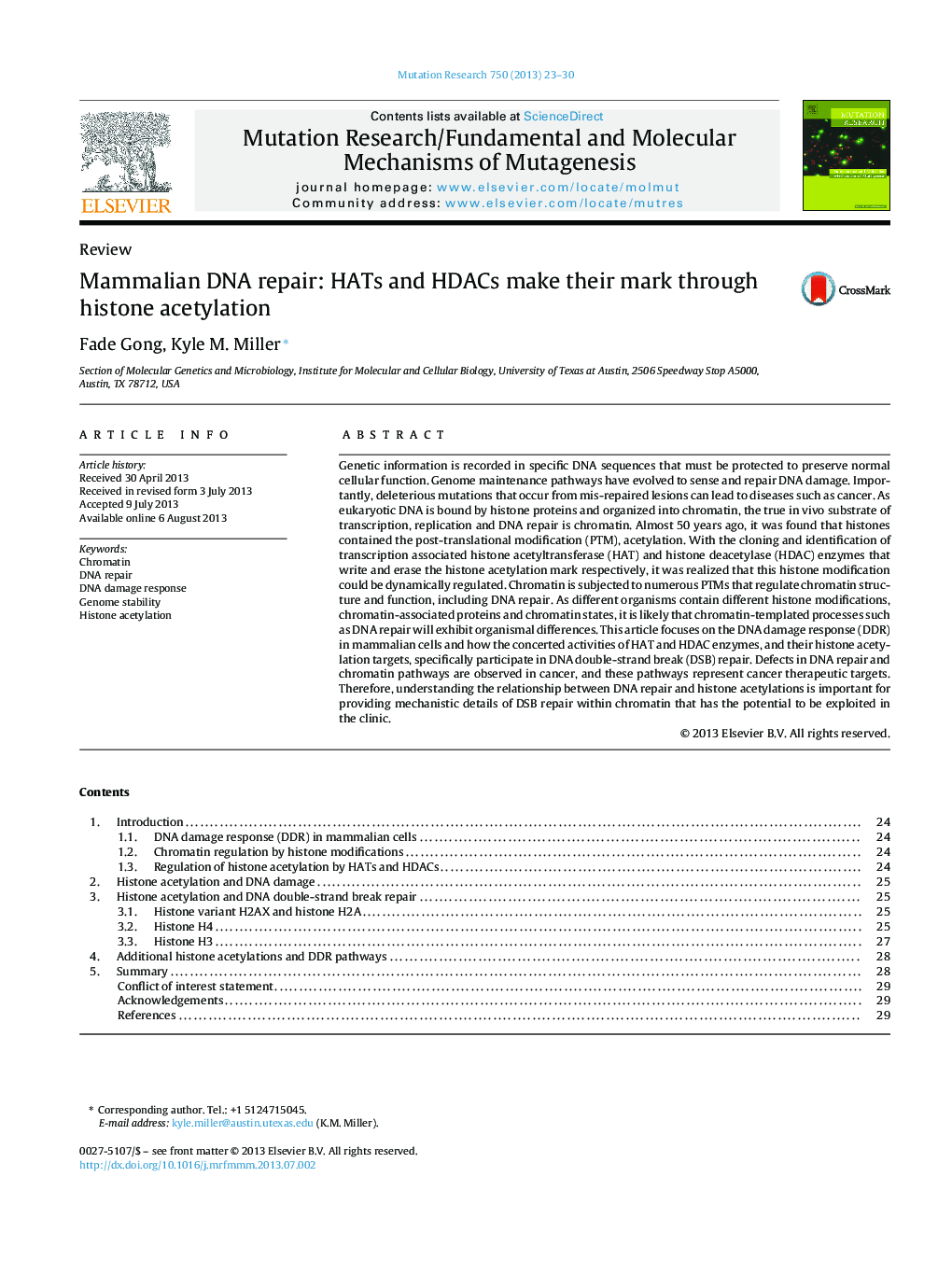| Article ID | Journal | Published Year | Pages | File Type |
|---|---|---|---|---|
| 2146344 | Mutation Research/Fundamental and Molecular Mechanisms of Mutagenesis | 2013 | 8 Pages |
Genetic information is recorded in specific DNA sequences that must be protected to preserve normal cellular function. Genome maintenance pathways have evolved to sense and repair DNA damage. Importantly, deleterious mutations that occur from mis-repaired lesions can lead to diseases such as cancer. As eukaryotic DNA is bound by histone proteins and organized into chromatin, the true in vivo substrate of transcription, replication and DNA repair is chromatin. Almost 50 years ago, it was found that histones contained the post-translational modification (PTM), acetylation. With the cloning and identification of transcription associated histone acetyltransferase (HAT) and histone deacetylase (HDAC) enzymes that write and erase the histone acetylation mark respectively, it was realized that this histone modification could be dynamically regulated. Chromatin is subjected to numerous PTMs that regulate chromatin structure and function, including DNA repair. As different organisms contain different histone modifications, chromatin-associated proteins and chromatin states, it is likely that chromatin-templated processes such as DNA repair will exhibit organismal differences. This article focuses on the DNA damage response (DDR) in mammalian cells and how the concerted activities of HAT and HDAC enzymes, and their histone acetylation targets, specifically participate in DNA double-strand break (DSB) repair. Defects in DNA repair and chromatin pathways are observed in cancer, and these pathways represent cancer therapeutic targets. Therefore, understanding the relationship between DNA repair and histone acetylations is important for providing mechanistic details of DSB repair within chromatin that has the potential to be exploited in the clinic.
